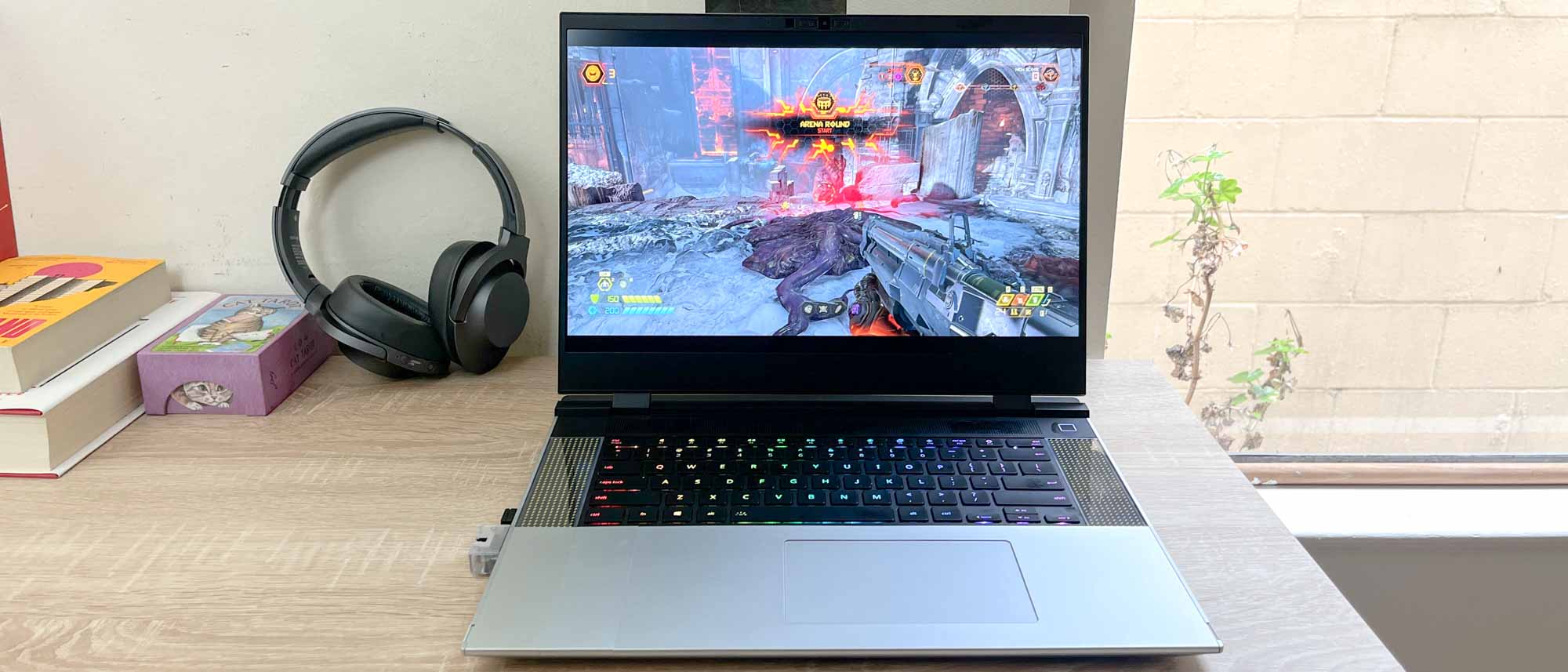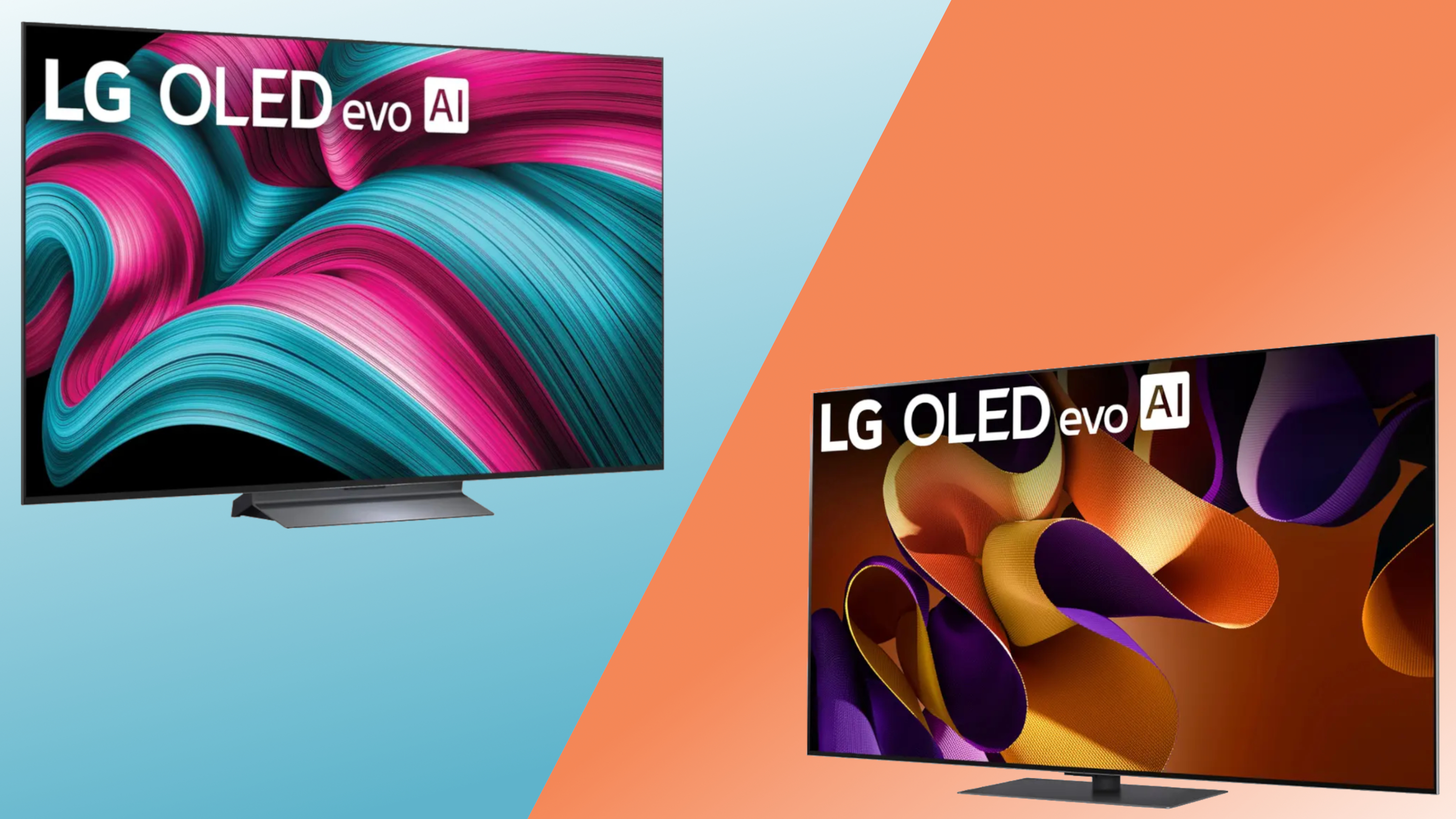Tom's Guide Verdict
The Framework Laptop 16 is the most upgradable and repairable 16-inch laptop you can buy, and with the right parts it's a solid gaming machine. Other gaming laptops might deliver more bang for your buck, but none is as customizable or as respectful of your right to tinker with the things you own.
Pros
- +
6-slot Expansion Card system offers killer customizability
- +
Attachable GPU module delivers respectable gaming power
- +
Customizable keyboard deck is a great addition
- +
Speakers deliver good, loud audio quality
Cons
- -
Keyboard deck flexes when you press on it heavily
- -
You have to purchase and keep track of a pile of Expansion Cards
Why you can trust Tom's Guide
The Framework Laptop 16 (starting at $1,399 DIY, $1,699 prebuilt) is the most repairable and upgradable 16-inch laptop I've ever seen. That alone makes this one of the best laptops you can buy — provided you care about your right to repair.
As you might guess from the name the Framework Laptop 16 is a bigger, more expensive version of the Framework Laptop 13 ultraportable. But if that laptop was optimized for work this Framework is built for performance, from its speedy high-res display to its faster DDR5 memory and detachable laptop GPU. And while it doesn't always feel as sturdy or as optimized as some of the best gaming laptops, what you get in return is unparalleled freedom to customize the laptop as you see fit.
That's because in addition to a swappable external GPU module on the rear which lets you attach a laptop graphics card for more graphical muscle (or detach yours if you don't want the extra weight and battery drain), the Framework Laptop 16 has 6 Expansion Card slots which let you swap in extra ports or storage as you see fit.
Sound familiar? It's an expanded version of the Expansion Card system pioneered by Framework in 2021 with its first 13-inch Framework Laptop. The Framework Laptop 16 offers a more capable, more complicated system, and while that does mean more mechanical parts that could break (especially if you're not careful when assembling or disassembling the laptop), the nice thing about a Framework is you can pretty confidently crack it open and start repairing it yourself — using the guides and parts provided by Framework.
There's a lot to cover in this Framework Laptop 16 review, so let's dive right in!
Framework Laptop 16 review: Specs
| Row 0 - Cell 0 | Framework Laptop 16 | Framework Laptop 16 (as reviewed) |
| Price | $1,399 DIY, $1,699 prebuilt to start | ~$2,208 |
| Display | 16-inch WQXGA (2560x1600) 165Hz | 16-inch WQXGA (2560x1600) 165Hz |
| CPU | AMD Ryzen 7 7840HS or AMD Ryzen 9 7940HS | AMD Ryzen 7 7840HS |
| GPU | Integrated Radeon 780M graphics or Radeon RX7700SS GPU | Radeon RX7700S |
| RAM | 8-32GB | 16GB |
| Storage | 256GB - 8TB, w/ additional available via Expansion Cards | 512GB |
| Ports | 6x Customizable Expansion Card slots | 6x Customizable Expansion Card slots |
| Size | 14 x 11.4 x 0.82 in (Graphics Module), 14 x 10.6 x 0.7 in (Expansion Bay) | 14 x 11.4 x 0.82 in (Graphics Module), 14 x 10.6 x 0.7 in (Expansion Bay) |
| Weight | 4.63 lbs (Expansion Bay), 5.3 lbs (Graphics Module) | 4.63 lbs (Expansion Bay), 5.3 lbs (Graphics Module) |
Framework Laptop 16 review: Price and availability
- Prices start at $1,399 for the DIY version, but you probably want prebuilt
- Prebuilt starts at $1,699, but expect to pay extra for components
The Framework Laptop 16 can be ordered right now from the Framework website at a starting price of $1,399 for the DIY version or $1,699 for the prebuilt version. In fact you've been able to pre-order the Framework Laptop 16 since summer 2023, and the company is working through batches of orders that are shipped out on a regular basis. At time of review the next batch of orders is slated to go out in Q2 2024, with no specifics beyond that.
A key thing to keep in mind is that if you try to save money by opting for the DIY version, you're essentially getting a laptop shell with a mainboard and not much else. The absolute bare-bones $1,399 Framework Laptop 16 requires you to provide your own RAM, your own storage, your own power adapter (!) and your own copy of an operating system.
You also need to pay for some Expansion Cards (which start at $9) if you want to use the Expansion Card slots at all, and since you need at least one USB-C card in an Expansion Card slot to charge the laptop (that's right, it doesn't have a built-in power connector) you have to get a USB-C Card or else you'll end up with a dead laptop.
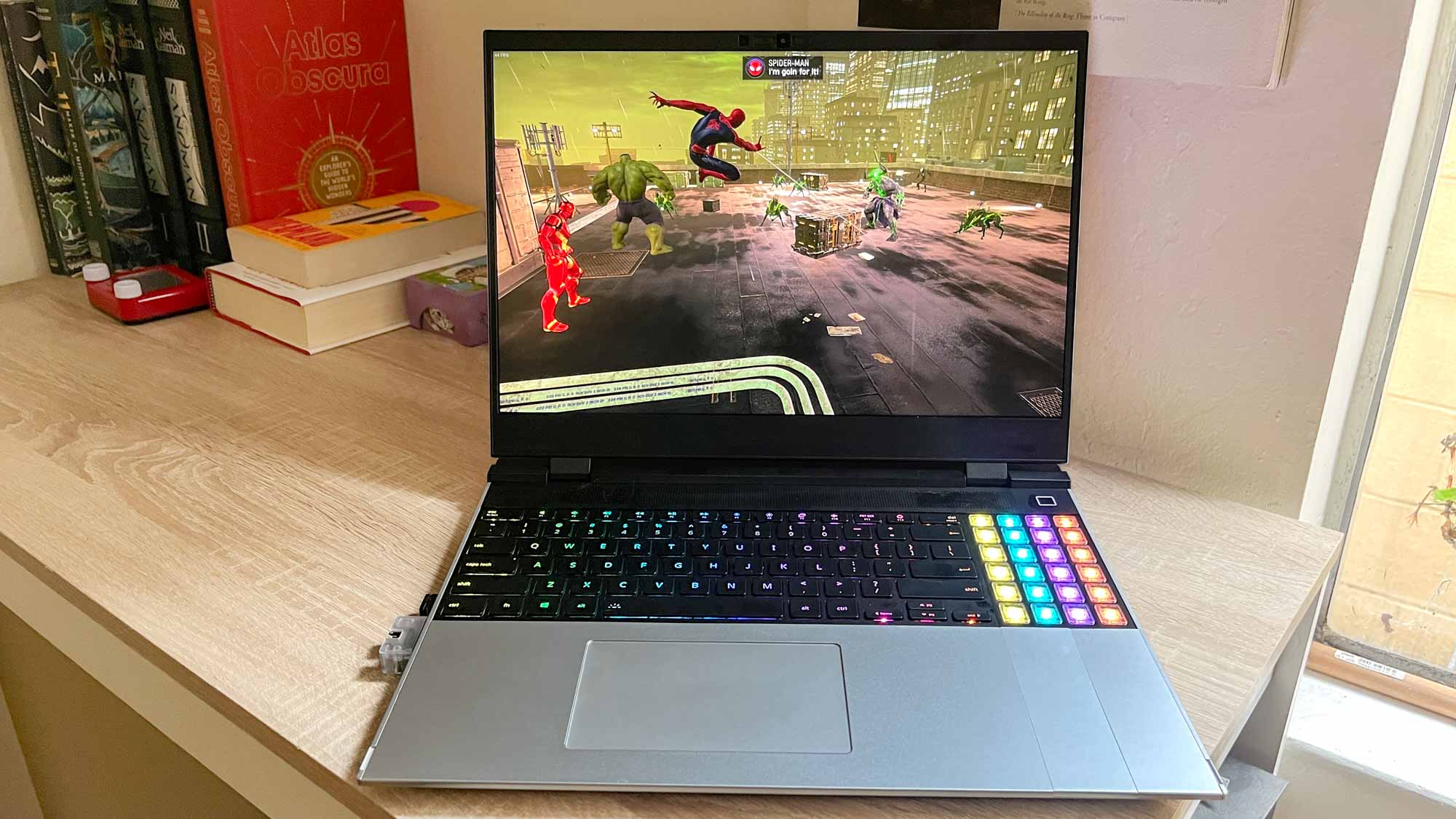
So while that $1,399 might seem appealing, you really need to be comfortable building your own laptop (down to sourcing your own parts) or else you're in for a world of frustration. If the idea of having to provide your own 100W power adapter (or 180W if you want to use the detachable Graphics Module) sounds terrifying, I highly recommend you stick with a prebuilt Framework. That way you can swap out parts down the road if you feel comfortable doing so, without being on the hook to basically build your laptop yourself.
For review purposes Framework sent us a Framework Laptop 16 review unit with an AMD Ryzen 7 7840HS CPU, 16GB of RAM and a 512GB SSD for storage as well as the Graphics Module containing the AMD Radeon RX 7700S laptop GPU. To buy the same package direct from Framework would cost you roughly $2,208, though of course you'd also want to buy some Expansion Cards and other Modules.
Framework also sent us a box of Expansion Cards and Input Modules (aka keyboard bits) to test out, the lot of which probably cost an additional $200 or more.
Framework Laptop 16 review: Design
- Framework's killer Expansion Card system gets an upgrade on this laptop
- Now you can customize the keyboard and attach a GPU, too!
The Framework Laptop 16 looks like nothing so much as a bigger, bulkier Framework Laptop 13. And just like its smaller sibling, the Framework Laptop 16 offers the killer customizability of Framework's Expansion Card system (more on that later), though here you get 6 customizable Expansion Card slots instead of 4.
I'm a complete idiot when it comes to soldering and wiring components, but none of that is necessary here. I love how easy it is to swap parts out on this Framework."
And while I could do with some more color options I like the simplicity of this 16-inch laptop, which sports a silver chassis made of aluminum and magnesium alloy (much of which is manufactured from post-industrial recycled materials) emblazoned with a simple Framework logo on the lid.
I was surprised to find that while this laptop looks big it feels surprisingly light in my hands, despite the fact that it weighs upwards of five pounds with the Radeon RX7700S Graphics Module attached. I think part of that may have to do with the slightly chintzy feel of the laptop deck, which bends and flexes under pressure more than I'd like. While the chassis itself won't bend easily, if you press down on the deck of the Framework (say, if you're typing hard or clicking the touchpad with gusto) you'll feel it depress more than most laptops I review.
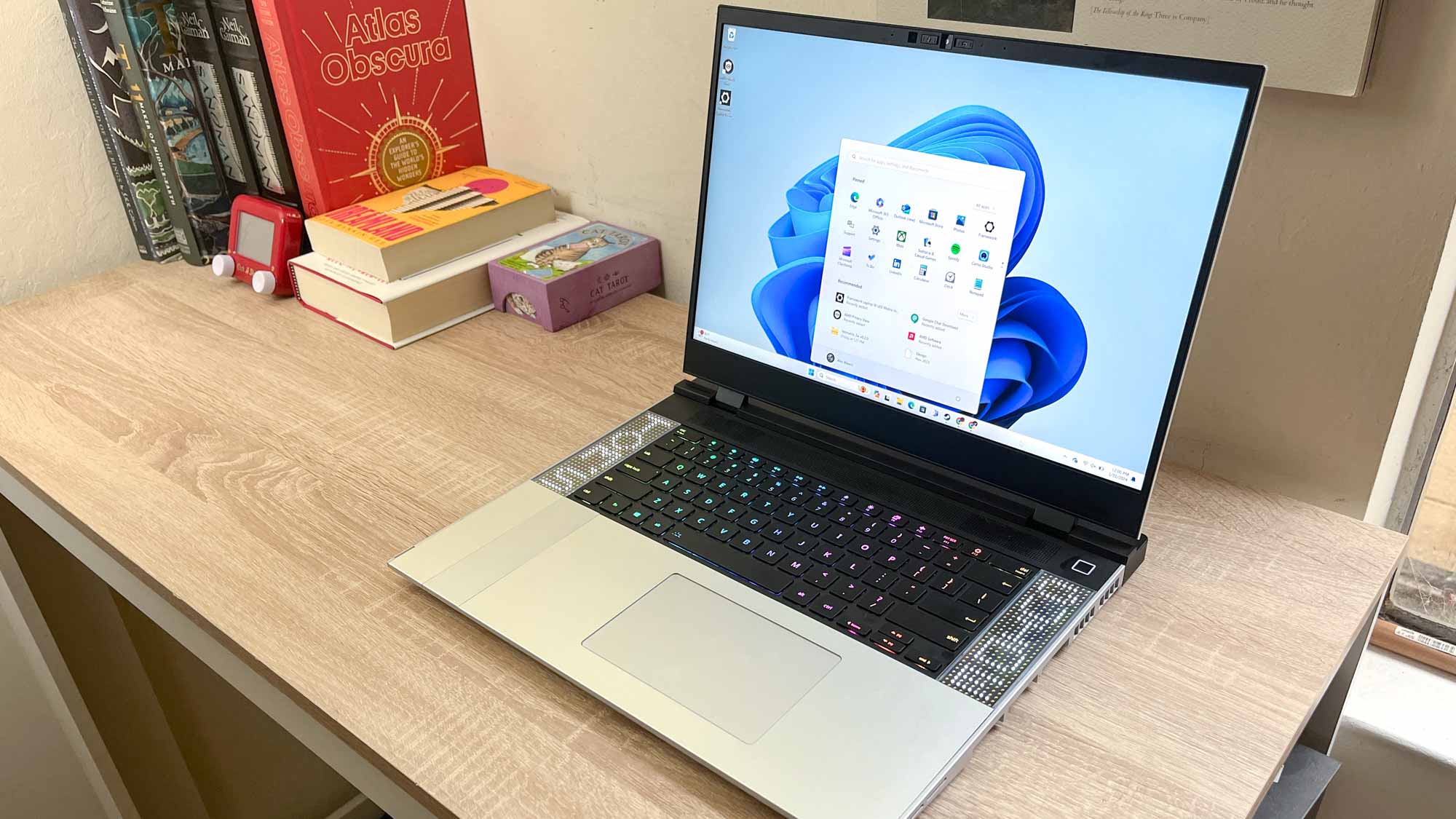
I suspect this is because the screen bezel, touchpad and keyboard are all removable without you having to touch a screw. Instead, the modular design of the Framework 16 allows you to swap in new parts or move the keyboard and touchpad around with your hands (or the included spudger tool) once you simply pop the two latches flanking the keyboard which hold everything in place.
This allows for unprecedented levels of customization, since you can purchase multiple variations of keyboard, numpad and spacers from the Framework marketplace and lay them out as you see fit. There are limited configuration options— our review unit can accommodate a centered, right-aligned or left-aligned keyboard, for example. But there's no way to move the keyboard down or swap the number pad with the touchpad. Saying that, though, it's still far more than you get on any other competing laptop.
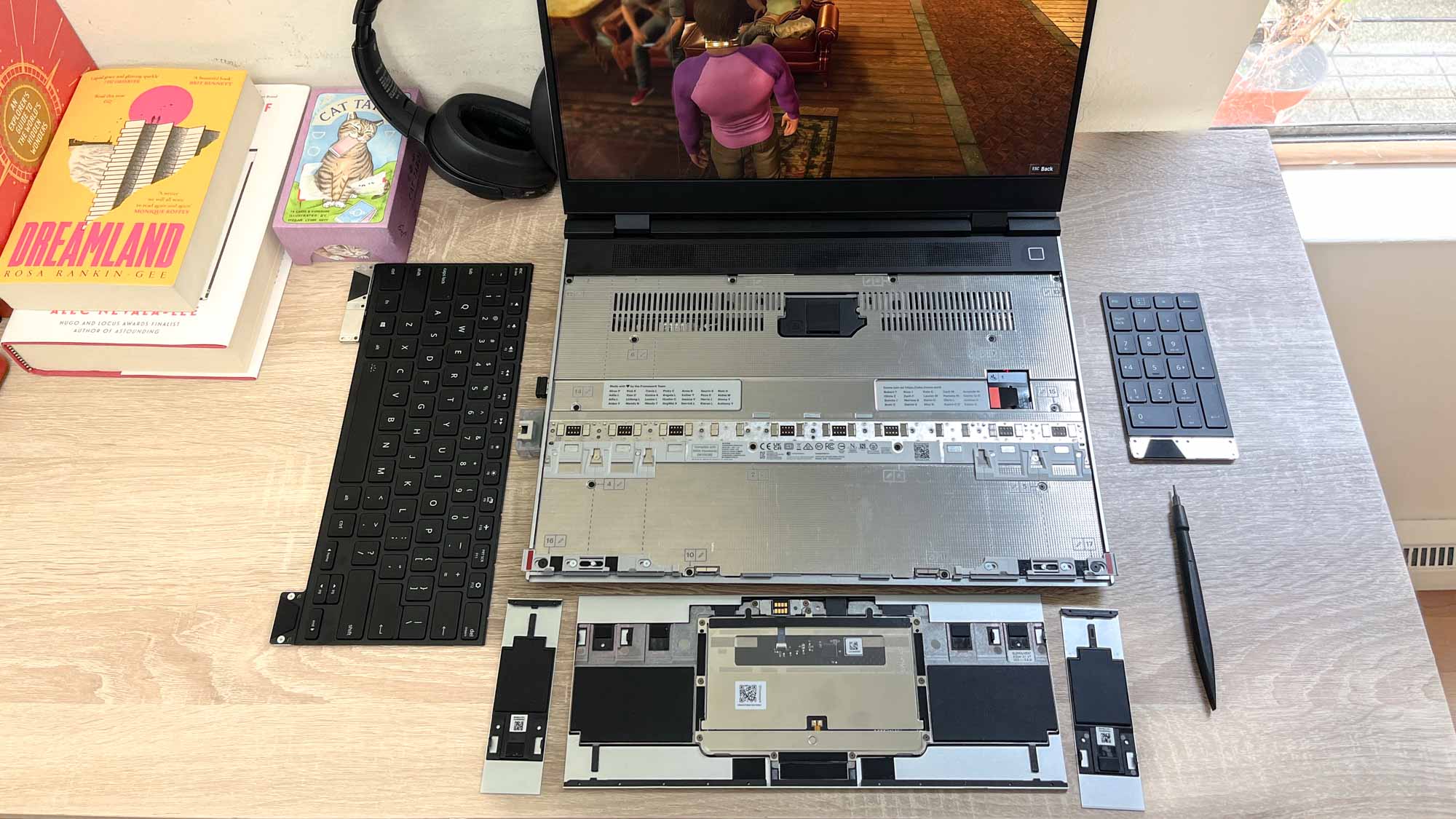
While it's totally understandable to be a bit terrified at the thought of popping your laptop's keyboard off and putting a new one on, the thoughtful design of the Framework 16 makes it feel possible. That's because inside the laptop there are clear directions, guiding marks and QR codes you can scan that link you directly to repair guides for the specific part you're looking at.
Believe me, despite my passion for tech I'm a complete idiot when it comes to soldering and wiring components, but none of that is necessary here. I love how easy it is to swap parts out on this Framework, to the point that I felt comfortable doing it while the laptop was running.
Sure, you might not feel ready to hot-swap the keyboard on the Framework 16 without powering it off first—but I'm pleased to report you can do it, and even a genial clod like myself was able to do it multiple times during the review process with no issues.
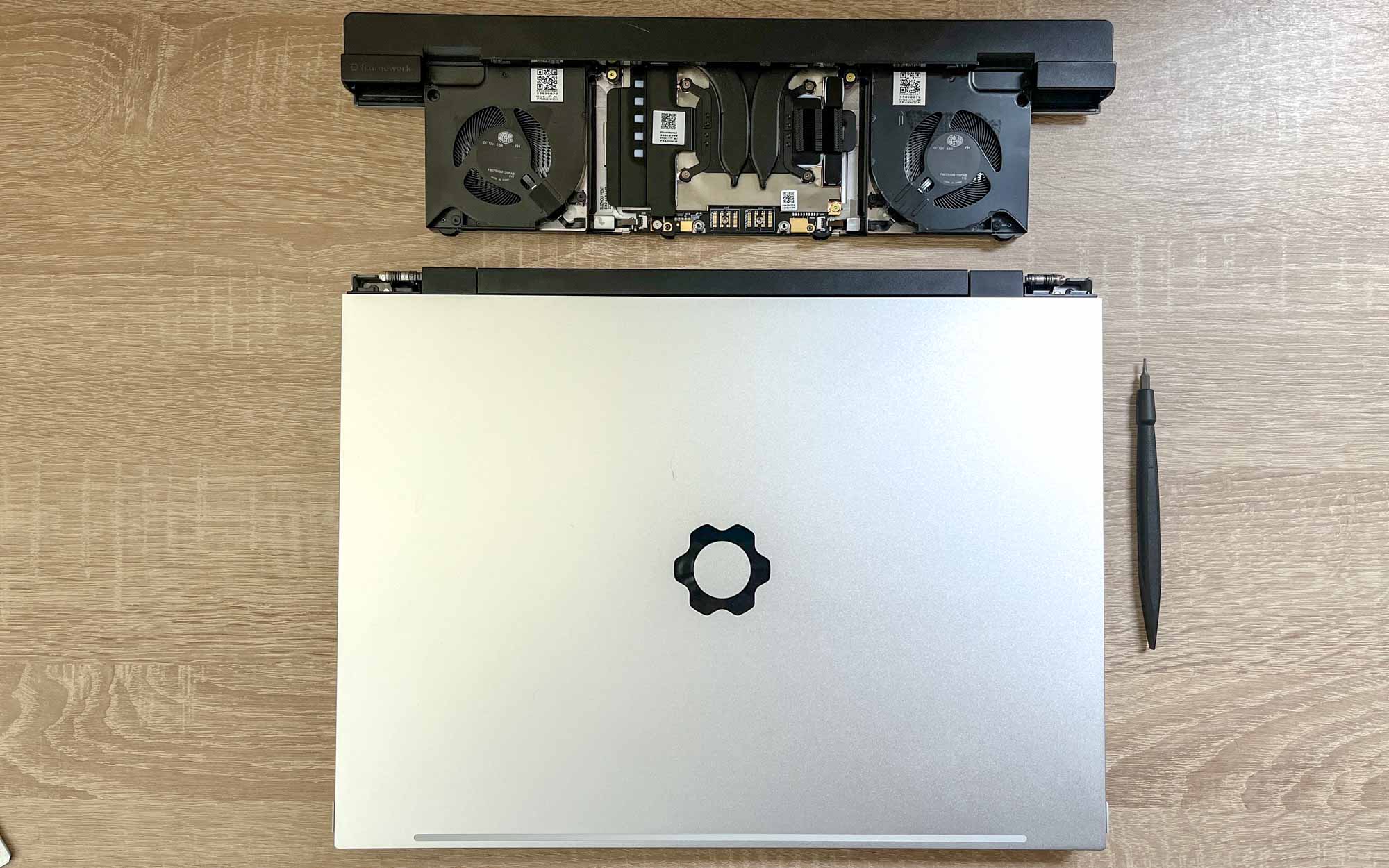
In addition to the keyboard deck, you can swap out the Expansion Bay shell on the back of the Framework 16 (which comes with it by default and has built-in fans) for a Graphics Module with a laptop GPU inside. Our review unit arrived with a Radeon RX 7700S attached and I rarely took it off during testing, so you'll see it on the back of the laptop in most photos in this review. With it attached the Framework 16 measures roughly 14 x 11.4 x 0.82 inches, though you shave off nearly an inch of depth and some thickness if you replace the Graphics Module with the lighter, GPU-less Expansion Bay shell.
Framework Laptop 16 review: Display
- 16-inch WQXGA (2560x1600) 165Hz display is bright and great for gaming
- Not as great for work requiring color accuracy
The 16-inch WQXGA (2560x1600) 165Hz display on our Framework Laptop 16 review unit won't blow you away, but it delivers a nice combo of looks, resolution and speed. While the Framework Laptop 16 paled in comparison to any OLED screen in the room, when I focused on the laptop I was quite happy to while away hours watching TV like I'm A Virgo and playing games like Doom Eternal or Marvel's Midnight Suns.
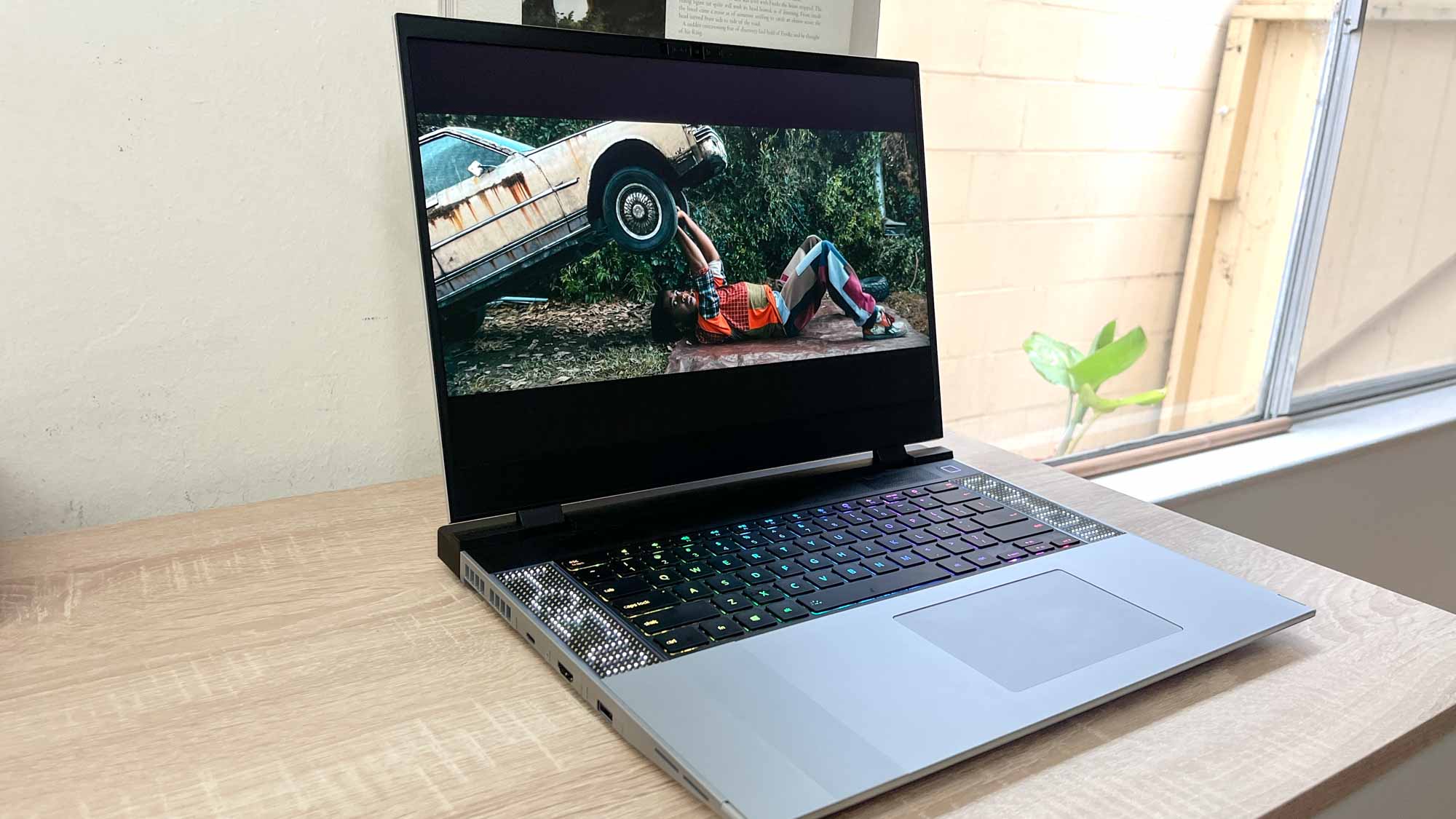
The 16:10 display supports variable refresh rate and AMD's FreeSync standard, which helps keep games running smoothly at high framerates. It's also advertised as being capable of displaying 100% of the DCI-P3 color gamut and achieving up to 500 nits of brightness, though as you'll see from our results it couldn't quite hit all those marks in our testing lab.
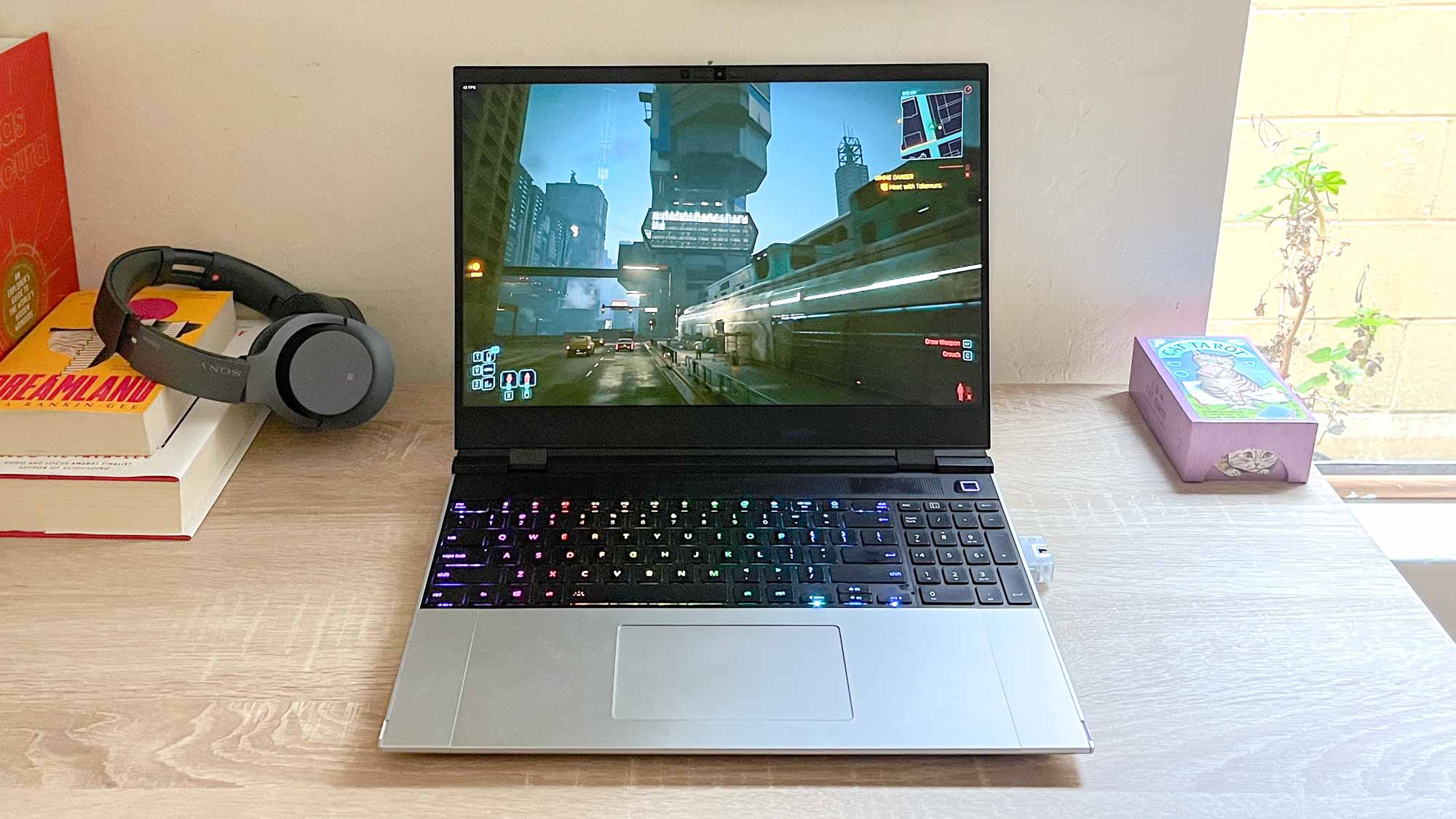
However, it does get as bright as Framework advertised. When we pointed our Klein K10-A colorimeter at the Framework Laptop 16 we measured it achieving an average brightness of 484 nits that peaked around 508 nits in the center of the screen. That's exactly what was promised, and quite a bit brighter than similarly-priced 16-inch gaming laptops like the Alienware m16 or Lenovo Legion Pro 5 Gen 8.
| Row 0 - Cell 0 | Average brightness (nits) | Max brightness (nits) |
| Framework Laptop 16 | 484.6 | 508 |
| Lenovo Legion Pro 5 Gen 8 | 318.6 | 321 |
| Alienware m16 | 281.8 | 295 |
| Framework Laptop 13 (2023) | 465 | 501 |
But as you can see from the charts of test results, our Framework Laptop 16 review unit couldn't quite hit that advertised 100% coverage of the DCI-P3 color gamut. While it could hit 106.5% of the less demanding sRGB gamut, our review unit was only able to achieve about 75.4% of the DCI-P3 color space.
| Row 0 - Cell 0 | sRGB gamut | DCI-P3 gamut | Delta-E |
| Framework Laptop 16 | 106.5% | 75.4% | 0.2 |
| Lenovo Legion Pro 5 Gen 8 | 116.3% | 82.4% | 0.17 |
| Alienware m16 | 102.7% | 72.8% | 0.15 |
| Framework Laptop 13 (2023) | 102.4% | 72.5% | 0.21 |
That's right in line with most laptops in this price range, and it means you probably won't want to do mission-critical color-accurate work on this display. But for the rest of us who aren't professional editors, the Framework Laptop 16's display is plenty bright and colorful enough to make what you do on it look good.
Framework Laptop 16 review: Ports
- 6 Expansion Card slots give you the freedom to configure ports as you please
- Difference in slot functions can be confusing, and you have to slot in Cards to charge the laptop or use headphones
The Framework Laptop 16 doesn't have a traditional laptop port array. Instead, it comes with an expanded version of the Expansion Card system pioneered in the original Framework Laptop — featuring six open slots on the bottom of the laptop (3 along each side) where you can slot in whichever Expansion Cards you please.
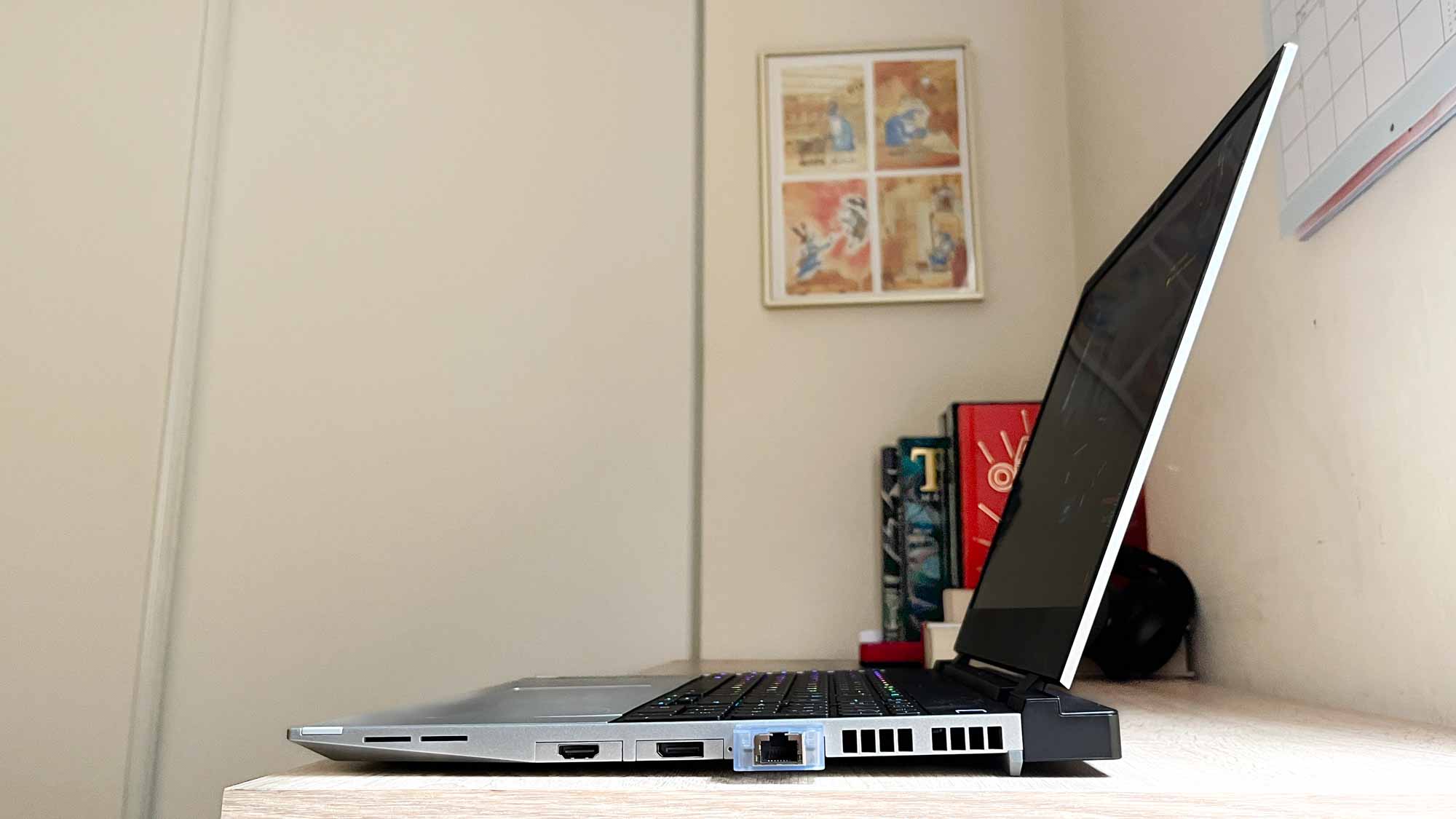
You buy these Cards direct from Framework, both when you purchase the laptop and afterwards via the Framework Marketplace. That means you do have to shell out for an assortment of Cards to use your Framework to full effect, but you get unmatched freedom to mix and match up the Cards you're using on the fly.
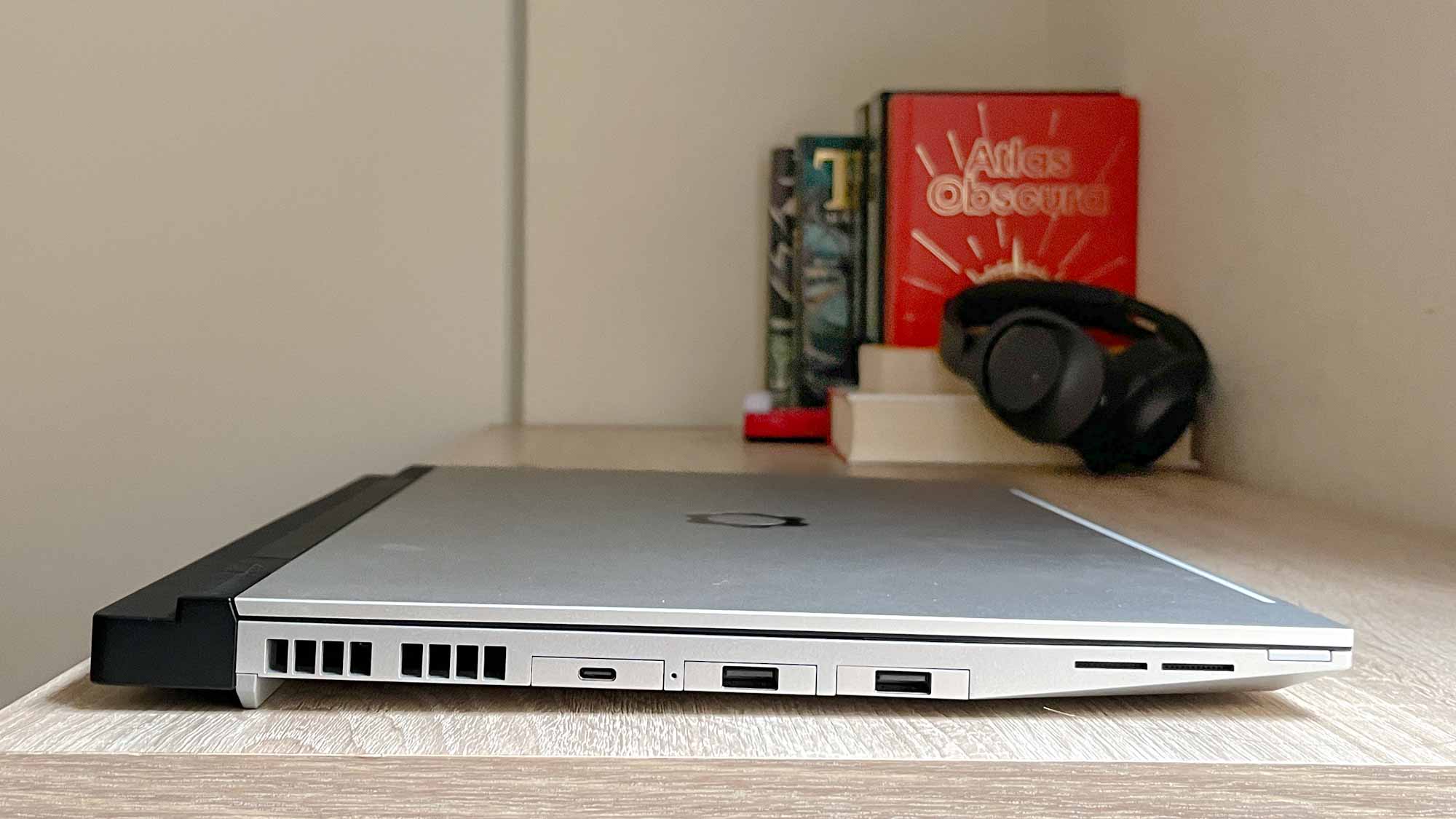
I really love the freedom this affords, because sometimes I like to use old devices that require USB-A ports and other times I'd like my laptop to have an Ethernet port so I can download games faster than Wi-Fi allows. Other times I'd really love to have an HDMI out, because I'd rather play my games on my big LG C2 OLED screen.
If I was wise I'd simply buy the perfect laptop with exactly the ports I need for every occasion, but if there's a version of myself with that kind of foresight and maturity I've yet to meet him. For that matter, I've yet to find the perfect laptop. The Asus ROG Zephyrus G14 (2023) comes pretty close, as gaming laptops go, but the side-mounted power port and lack of USB-C ports turn me off.
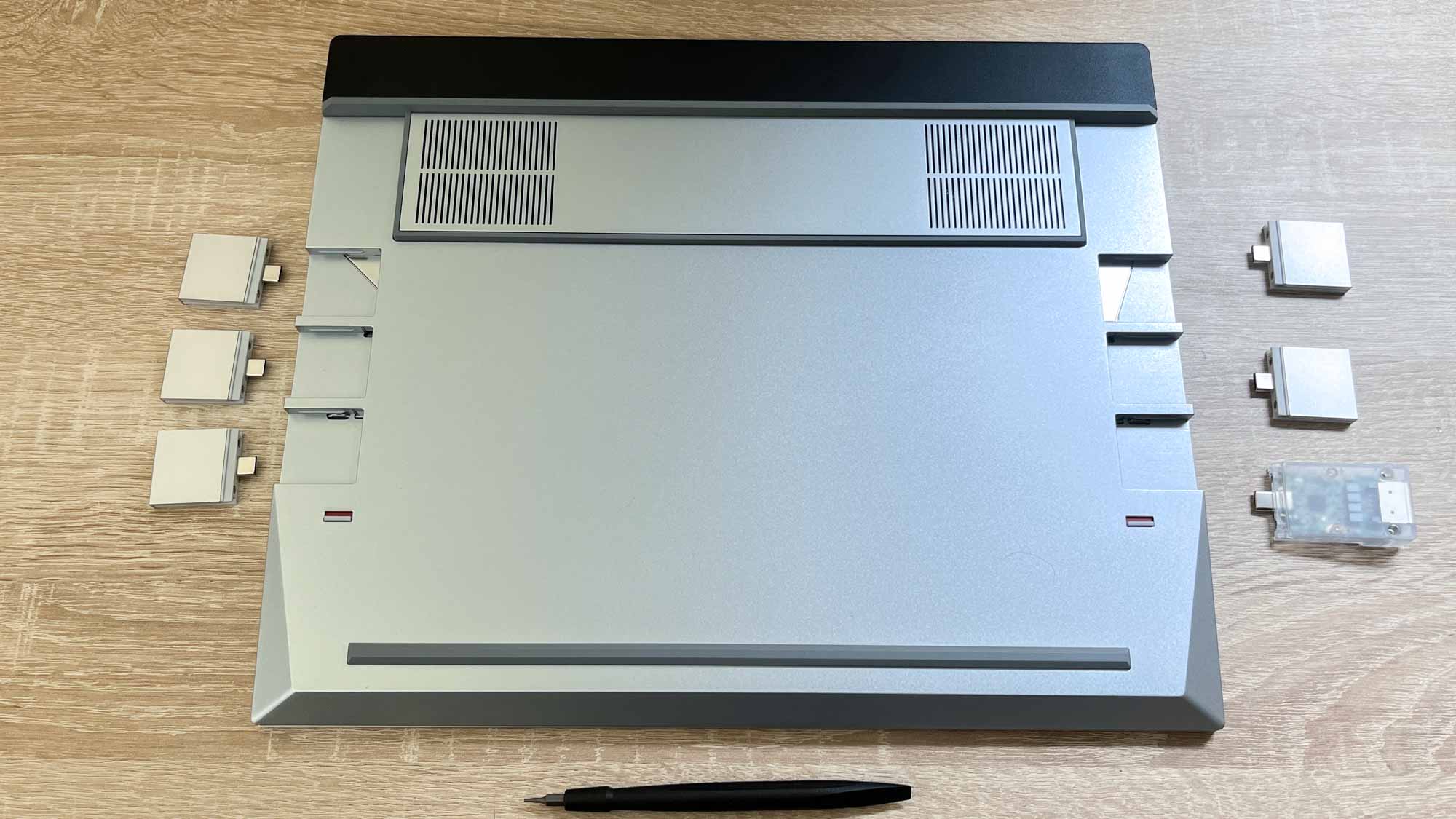
That's why I appreciate the Expansion Card system: You can put as many USB-C ports on the Framework 16 as you care to, and you can charge the laptop from almost any of them. However, not all the slots work the same. The Ryzen 7040 Framework 16 laptops are slightly more complex than the Framework 13 in that only some of the Expansion Card slots support specific Cards.
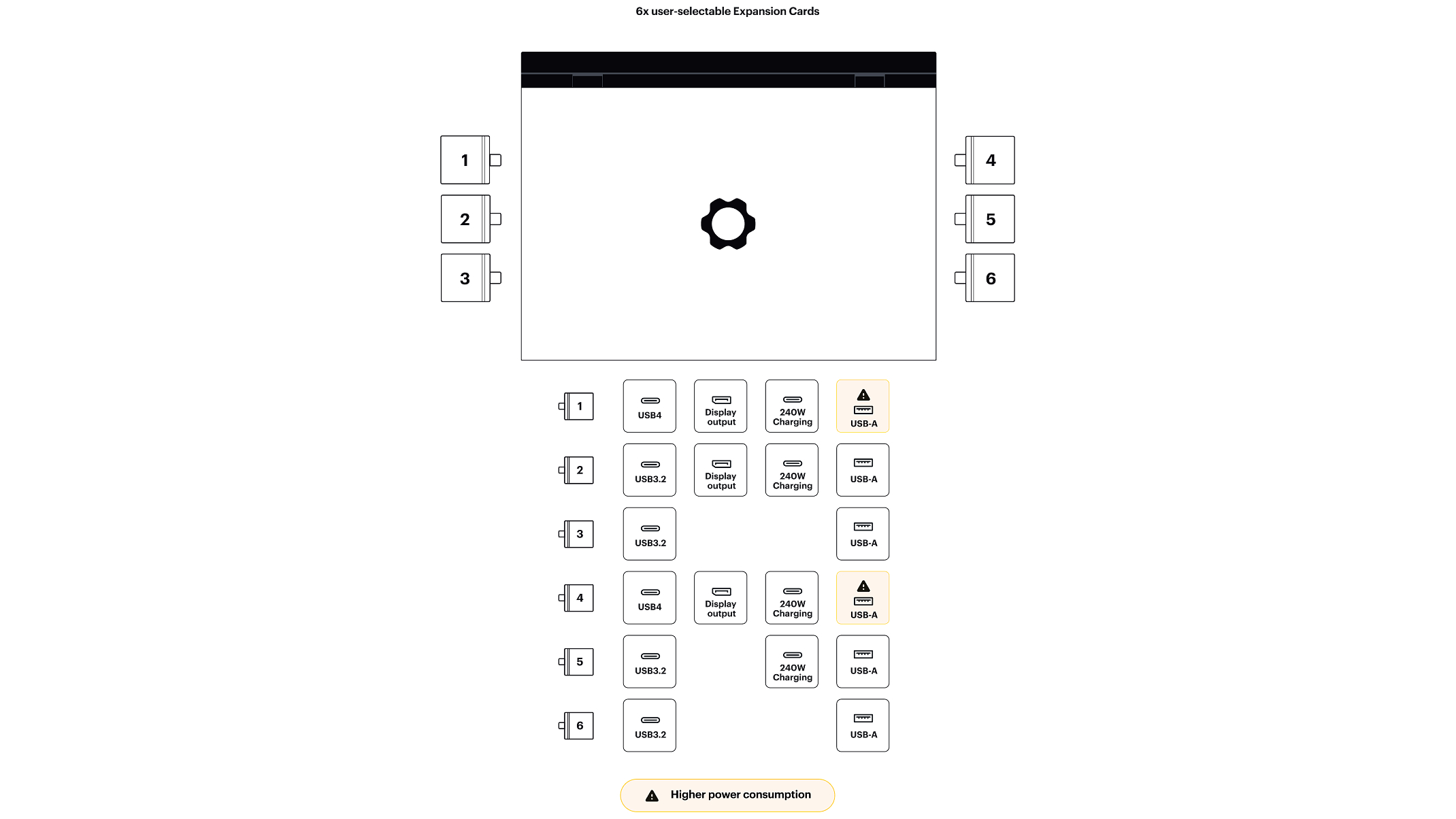
This has to do with the mainboard, and it's not too much of a hassle once you learn which slots support which Cards. The two ports on either side that are closest to the display support USB4 via the USB-C Card, support display out Cards (so DisplayPort or HDMI out) but they deliver way too much power if you plug in a USB-A device. Those are best saved for the two Card slots closest to you, which are less capable than the rear slots insofar as they can only offer USB-C 3.2 instead of USB-C 4, can't support charging and can't support display out Cards.
It's a little complicated, but there's an easy reference document and you learn the trick of it pretty quick. Another thing you quickly learn about the Framework 16 is that you have to attach a USB-C Expansion Card in order to even charge the laptop.
That's right, there is no built-in charging port on the Framework 16, nor is there a headphone jack. But you can shell out $19 for an Audio Expansion Card sporting a 3.5mm audio jack that slides into one of the slots on the laptop, if you really want to plug in a pair of cans.
Framework Laptop 16 review: Performance
- Speedy performance, and with eGPU attached it's a solid gaming machine
- But even with the GPU it can't play games as well as competing gaming laptops
Our Framework 16 review unit feels plenty fast enough for my day-to-day work thanks to its AMD Ryzen 7 7840HS CPU and 16GB of DDR5 RAM. Not once did I notice frustrating slowdown or hitching when flipping between browser tabs and apps at work, nor did I have much trouble playing games when the work was done.
I had loads of fun cruising around Night City in Cyberpunk 2077 once I turned the settings down from Ultra to High, and I could even enjoy a little raytracing thanks to the Radeon 7700S stuck to the butt of this laptop. Other, less demanding games (like Warhammer 40,000: Chaos Gate - Daemonhunters and Marvel's Midnight Suns) ran well (40-60 frames per second) even at High settings, as long as the Framework 16 was plugged in and set to high performance mode.
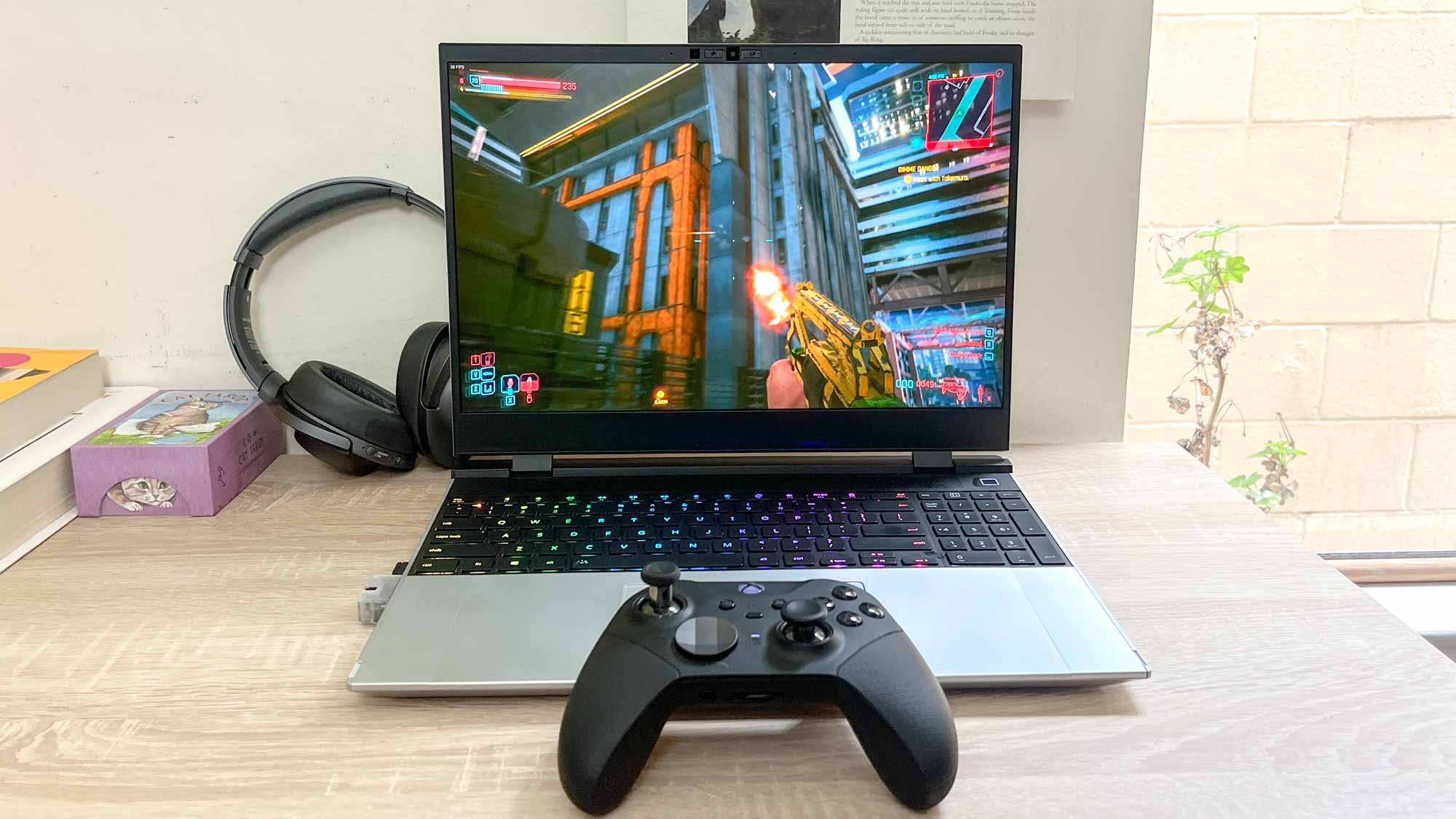
But when we put the Framework 16 through our battery of performance tests, its weaknesses compared to more performance-focused gaming laptops started to show. As mentioned earlier I stacked the Framework's test results up against some similarly-priced 16-inch gaming laptops we recently tested, and while the Framework got close it couldn't match the raw CPU power of the Alienware m16 (a $1,699 model packing an Intel Core i7-13700HX) or the Lenovo Legion Pro 5 ($1,839 model with an AMD Ryzen 7 7745HX CPU).
| Row 0 - Cell 0 | Geekbench 6 multi-core CPU | 25GB file copy speed test | Handbrake video editing time |
| Framework Laptop 16 | 11,983 | 1,689.24 MBps | 4:34 |
| Lenovo Legion Pro 5 Gen 8 | 13,524 | 2,149.53 MBps | 4:05 |
| Alienware m16 | 13,884 | 785.55 MBps | 4:58 |
| Framework Laptop 13 (2023) | 11,273 | 1,697 MBps | 5:49 |
Both gaming laptops beat the Framework 16 in the Geekbench 6 multi-core CPU benchmarking test, and both were able to burn through our video editing test (which times how long it takes the laptop to transcode a video file using Handbrake) faster to boot.
The one winning point for Framework here is in the drive speed test, where the Framework Laptop 16's M.2 SSD was able to throw files around faster than the anemic drive inside Alienware's m16.
And when we look at some performance tests using recent big-budget games, a similar story plays out. We ran our Framework Laptop 16 review unit through a series of gaming benchmarks, and while it performed well enough it was outclassed by the Alienware and the Lenovo gaming laptops across the board.
| Row 0 - Cell 0 | Assassin's Creed Valhalla | Cyberpunk 2077 | Grand Theft Auto V |
| Framework Laptop 16 | 74 | 17.4 | 80.5 |
| Lenovo Legion Pro 5 Gen 8 | 113 | 42.8 | 101 |
| Alienware m16 | 103 | 32.8 | 99.9 |
So while I didn't have any complaints while playing through my favorite PC strategy games on this laptop, it's definitely not the best choice for raw performance. You can definitely enjoy modern games like Alan Wake 2, Cyberpunk 2077 and Baldur's Gate 3 on this laptop, but you might have to fiddle with the graphics settings to wring the most enjoyment out of it.
Framework Laptop 16 review: Audio
- Stereo speakers get loud and deliver bright, clear audio with little distortion
- No bass worth mentioning
The stereo speakers inside our Framework Laptop 16 review unit do a decent job of kicking the jams out of the two speaker cutouts on either side of the laptop, near the front of the keyboard deck. The speakers get nice and loud without noticeable distortion on the high end, and I'm impressed at how strong and clear vocals sound when listening to artists like Kamaiyah, The Mountain Goats and Tune-Yards.
However, despite the presence of an ALC1318 smart amp inside the Framework I didn't feel much bass, even with the laptop cranked to max volume. Hardly a dealbreaker, but you'll want to listen to your drum and bass with a nice set of headphones (or ideally, an in-car surround system with a woofer in the trunk) for peak enjoyment.
Framework Laptop 16 (2023) review: Keyboard
- Keyboard and touchpad work well despite being easy to move around
- Customizable keyboard and touchpad components let you adjust for comfort
The keyboard on your Framework Laptop 16 will look different depending on which one you order, but they all offer 1.5mm of key travel, support n-key rollover and run on QMK firmware.
The default keyboard (available in a variety of languages and formats) is backlit with white light, but you can also get either a clear or dark keyboard with per-key RGB lighting like what you see on our review unit. And as mentioned earlier you can align the keyboard to either side or center it on the deck, then slot in a number pad or an LED-equipped panel to add some extra flair.
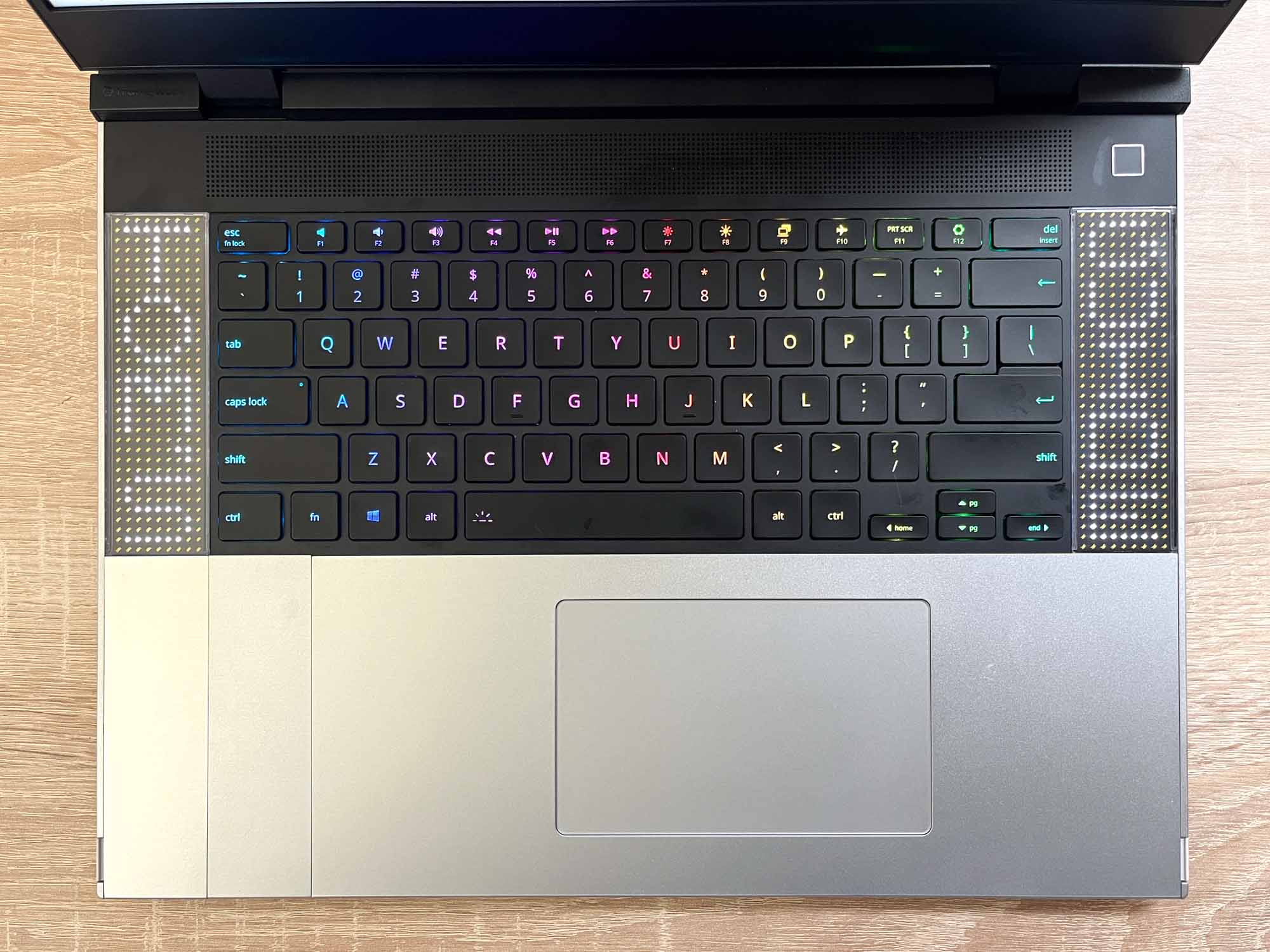
The feeling of typing on the Framework Laptop 16 is quite normal and nice, at least to my fingers. While the keyboard is removable and the deck beneath it can sometimes feel a little weak if you press hard on it, I never noticed any weakness or unsettling bending happening while I was typing on this Framework. The keyboard and number pad also stay nice and secure once you slot them into place, so you shouldn't worry about them sliding around while in use.
The touchpad beneath the keyboard can also be aligned to the left, right or center depending on what you find comfortable, and while I sometimes had a hard time knowing where the line between right-click and left-click was I managed to muddle through. I think I'd rather use an external mouse or gamepad for any serious work or play, but in a pinch the Framework Laptop 16's touchpad is good enough to get you through the day.
Framework Laptop 16 (2023) review: Battery life and heat
- Nearly 9 hours of tested battery life is decent for a high-performance laptop
- Intense gaming can turn this machine into a lap-scorcher, so watch out
Our Framework Laptop 16 review unit lasted just under 9 hours (8:49) in our battery tests, which task the laptop with endlessly surfing the web via Wi-Fi (with its screen set to a rather dim 150 nits of brightness) until it conks out.
That's an interesting number because it means different things depending on what you compare the Framework Laptop 16 against. It's pretty poor compared to most MacBooks, which tend to average between 12-18 hours of life on a single charge. It's also worse than many of the best Windows laptops, many of which can achieve 10-12 hours with no trouble.
But when you compare our Framework 16 review unit against similarly-sized gaming laptops with high-performance components, 8+ hours when browsing the web isn't terrible. In fact, it's a bit better than average.
| Row 0 - Cell 0 | Time (Web surfing) | Time (Gaming) |
| Framework 16 | 8:49 | ~1:05 |
| Alienware m16 | 5:05 | 1:02 |
| Alienware x16 | 5:37 | 1:20 |
| Asus ROG Strix Scar 16 | 5:32 | 1:22 |
| HP Victus 16 | 7:03 | 1:40 |
| Razer Blade 16 (2023) | 5:06 | 1:32 |
| Framework 13 (2023) | 11:38 | N/A |
Luckily it has decent charge speeds. I plugged in our Framework Laptop 16 review unit at 0% power, and about 30 minutes later it had climbed up past 23%. After an hour it had charged up to about 50%, which isn't half bad.
And while you can expect only about an hour or so of gaming on battery power when you have all the settings cranked to max, that's again pretty on par with other gaming laptops. While you will get more fun out of a full battery with a gaming laptop like the Asus ROG Zephyrus G14 (2023), even that long-lasting gaming machine only lasts an hour or so longer than the Framework 16 in our battery tests.
However, our Framework 16 does get a little toasty while gaming. I noticed this in my own time playing games like Cyberpunk 2077 on it, and our heat test results back that up. When we put the laptop through 15 minutes of hard work and then skimmed it with a heat gun, we found it got as hot as 102.2 degrees on the upper-left corner of the keyboard deck. When we then put it through 15 minutes of a demanding game like Metro Exodus Enhanced Edition it got even hotter, peaking at 121.1 degrees on the bottom of the laptop.
So while you should have plenty of warning before it gets too hot to handle, be aware this machine could become uncomfortably warm if you do a lot of high-octane gaming with it in your lap.
Framework Laptop 16 review: Webcam
- 1080p webcam does a good job of capturing details
- Physical privacy switches for webcam and mic are nice to have
The 1080p webcam in our Framework Laptop 16 review unit does a decent job of capturing detail, but it's not going to make you look your best on video calls.
I do appreciate that the webcam (which sits in the center of the display's top bezel) is flanked by two physical switches, one to turn off the camera and the other to disable the microphone. If you're concerned about privacy and having complete control over when your laptop is recording you, this is the best you can get short of slapping duct tape over the webcam.
Framework Laptop 16 review: Verdict
If I was going to buy a laptop for myself this year, I'd buy a Framework Laptop 16."
The Framework Laptop 16 is a great all-around laptop that's a jack of all trades and master of none. Kit it out with the right parts and it could easily sit on your desk at college all semester as a dedicated homework/gaming machine, but with 10 minutes of work you can transform it into a lighter laptop with more storage and all the ports you need to deliver your presentation to the class.
Though it's not as long-lasting as a MacBook, as light as the slimmest ultraportables or as powerful as a cutting-edge gaming laptop this Framework delivers killer value with its unparalleled customizability and repairability. While the modular design brings with it new things to worry about, like losing pieces of your keyboard deck or running out the door without your charging port attached, in return you get the peace of mind of knowing that when something breaks, there's a decent chance you can order a replacement part from Framework and fix it yourself.
At a broader level, the Framework Laptop 16 is a remarkable feat of engineering that proves the original Framework Laptop wasn't just a flash in the pan.
That's a big deal because back when the company debuted in 2021 I wasn't sure they could sell enough Frameworks to survive the year, much less prove there was a market for ultra-customizable, highly repairable laptops. And that could undercut the value of these laptops considerably, because if Framework goes out of business we may see the marketplace for replacement Framework parts dry up—though Framework has committed to working with the community to provide parts schematics and other resources, so repairs and new parts could continue to be easily available even if the company shutters.
But with the Framework Laptop 16 finally here and looking as good as advertised, my fears about the longevity of Framework are slowly fading. While you can get better performance from other laptops, there's nothing on the market that can match the Framework Laptop 16 in terms of versatility, repairability or respect for owners. And that's why if I was going to buy a laptop for myself this year, I'd buy a Framework Laptop 16.

Alex Wawro is a lifelong tech and games enthusiast with more than a decade of experience covering both for outlets like Game Developer, Black Hat, and PC World magazine. A lifelong PC builder, he currently serves as a senior editor at Tom's Guide covering all things computing, from laptops and desktops to keyboards and mice.
